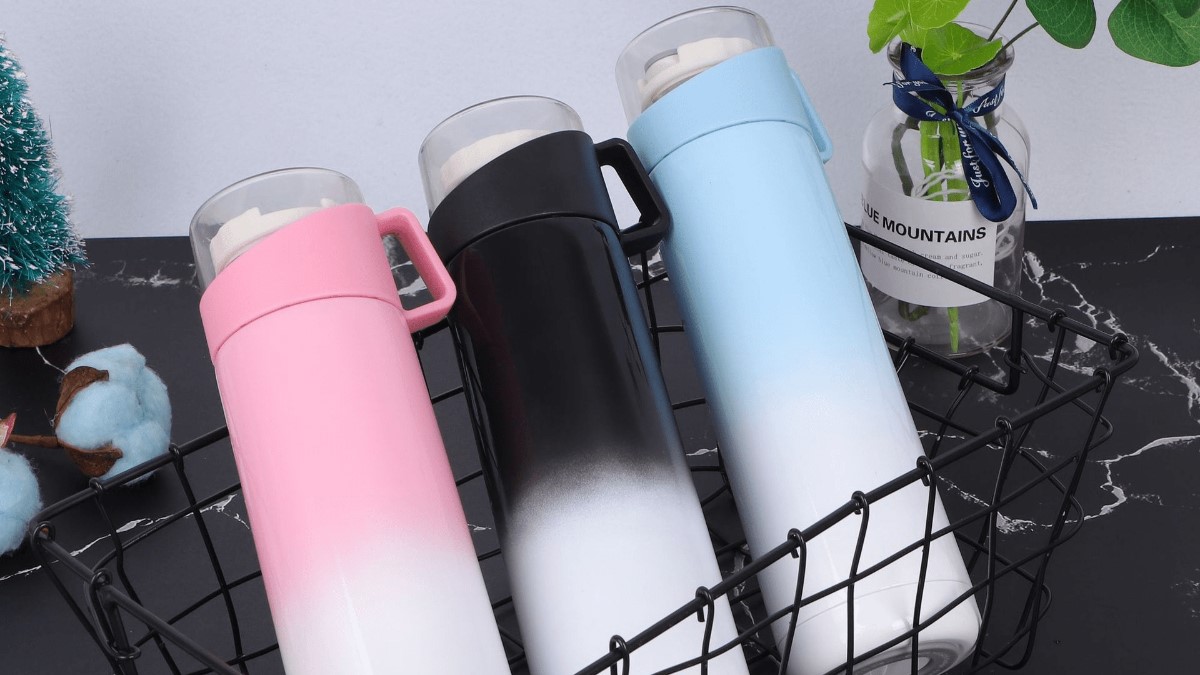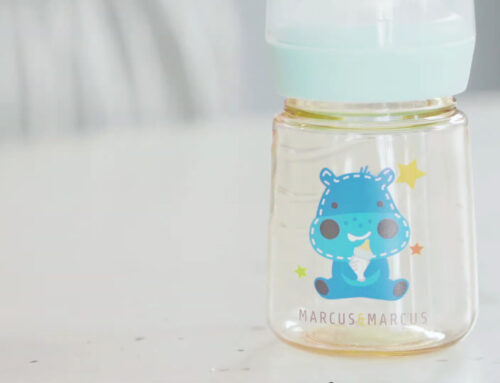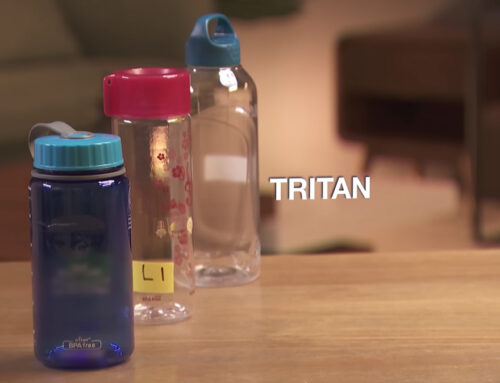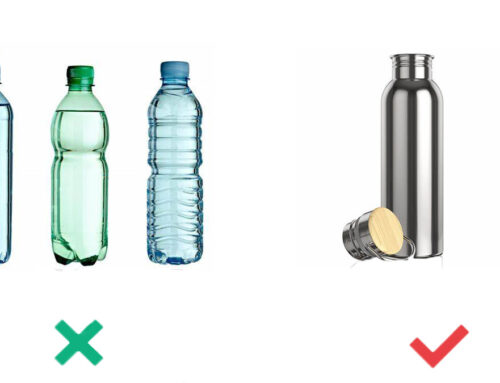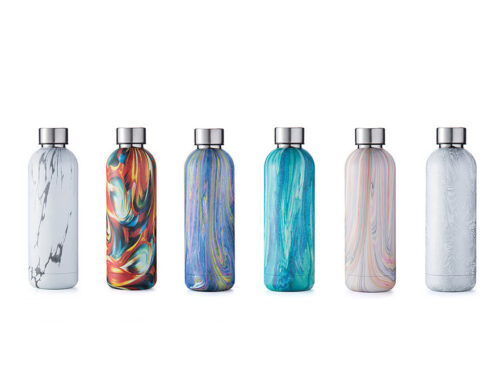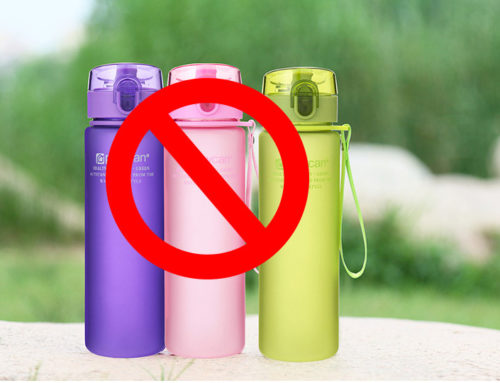Any random search on Google about “Which material is the best for hydro flasks” could lead you to a long-termed selection and consideration. Stainless steel, plastic and glass – each of them wins in a certain aspect. But which one exactly will you choose? It could be a tough question. KingStar is going to list all pros and cons here through different ways here and leave the deciding part to you.
Which Material Survives Longer?
Durability of a thermal bottle, in some extents, determines its’ life span because it preserves warmth or chillness through vacuum created between two layers which could be destroyed after crashing. So which raw materials should we pick to extend service life?
- Plastic – Medium robustness. Collisions against rocks might lead to distortion, and you might have to take the risk of your plastic thermos water bottle corroding under heat or weather condition. However, these disadvantages are usually acceptable among the majority.
- Stainless Steel – Stainless steel vacuumed water bottle totally triumphs plastic or glass in robustness. Strike against harsh rocks might cause dents which might not affect any using effect at all, and not to mention that those dents could be fixed easily with a hairdryer.
- Glass – Definitely the least durable raw material along these three. While stainless steel drink bottles only get dents after crashing or falling, glass bottles get shattered into pieces which might even cause incautious cuts. KingStar suggests to avoid glass thermos bottles if you’re planning a trip or a hiking.
Winner – Stainless Steel.
Which Water Bottle Seems to be A Greater Deal?
Besides durability, cost-efficiency is always another essential consideration. You do want your thermal drinking bottle with a longer using term as it could – aka you want this cost to be worthy. Which raw material meets this requirement best?
- Plastic – As the most common raw material in thermal flasks industry, plastic often comes with a relatively acceptable price. However, statistics show that durability of plastic bottles only lasts for a few years before replacement. Though it’s usually with a rather good price, plastic insulation bottles could rank low in price/performance ratio.
- Stainless Steel – Stainless steel thermos usually costs more than plastic ones, but there’s a good reason. Using term in expectancy of steel water bottle, compared with plastics of the same brand, lasts long enough to save the extra costs you spent. For example, stainless steel insulated drink bottles of KingStar, under proper use without crashing, could last a lifetime without any replacement.
- Glass – If we don’t take frailness into consideration, glass thermos will definitely rank the first – but it’s the biggest disadvantage. It might work perfectly well until a cautious bump ruins it all. Can’t ignore this fatal flaw if we’re taking overall consideration.
Winner – Stainless Steel.
Environment Protection – Essential Consideration
In world nowadays with issues of environmental protection widely reported and argued, almost everyone wishes that thermal water bottles they pick will not harm our living Earth in every way. Which counts the best pick under this circumstance then?
- Plastic – Unlike what’s usually imagined, some plastics are recyclable such as polypropylene which is widely applied in manufacturing recyclable thermos flasks. You can check out the “BPA Free” sticker to figure out if the tumbler cups are environmentally friendly – However, there’s still debates against this topic.
- Stainless Steel – It ranks neutral in this case. Tumblers made of stainless steel is totally recyclable – but it’s not biodegradable. However, even being left in wild, stainless steel releases no harmful chemicals to our drinking water or soil. Something between good or bad.
- Glass – Definitely the most environmentally friendly raw material for an insulated bottle. It’s 100 percent recyclable which means zero toxic chemicals to the land. Glass even does good to the environment – it’s beneficial in releasing climate change.
Winner – Glass.
Which One Keeps Temperature Better?
Although wonderful heat preservation is always listed in every advertisement of every companies without exception, thermal tumblers of different materials perform different in keeping temperature. Besides factors unchangeable (technologies in factories, for example), materials carries weight, too.
- Plastic – To be frankly – not many people turn to plastic insulation flasks for temperature preservation. Without progressive technology for support (not as advanced as vacuum insulation), plastic water bottles don’t usually keep your drinks in proper temperature for long.
- Stainless Steel – Stainless steel not only means a raw material, but also an advanced technology of double walled insulation which creates vacuum to preserve your beverages hot or cold. KingStar stainless steel water bottles, for instance, preserves coldness for 24 hours and warmth for 12 hours.
- Glass – Glass insulated drinking bottles, similar with plastic, can’t beat stainless steel in warmth preservation. Ice cubes melt easily in it and your coffee gets cold after few hours.
Winner – Stainless Steel
Taste – Does Your Beverage Taste Rusty?
No one likes the taste of “metal” from thermal water tumblers, so here in KingStar’s guide we list taste as an equally essential consideration. You don’t want any impact towards flavor of your favourite beverage or pure drinking water, right?
- Plastic – According to countless customers of KingStar plastic insulation water bottle, plastic will not impact any flavor totally.
- Stainless Steel – Stainless steel seems to fail in this case, but is it so? Lots of people complains about the “metallic smell and taste” without knowing that it could be easily gotten rid of. 24 continuously soak in baking soda and another soak in vinegar will solve this unwelcome taste for good.
- Glass – Perfect raw material of thermos for those who dislike any funny taste! It’s been tested that glass thermal cups won’t bring any unwanted taste to any drink inside – even coffee which is frequently suggested not to fill inside any insulated water bottle.
Winner – Glass.
Conclusion
It looks like each of raw materials comes with different pros and cons, isn’t it? It’s merely possible to find yourself a wonderful thermal water cup which meets all your requirements perfectly without any flaw. Even the undoubted winner, stainless steel, fails in some certain cases.

